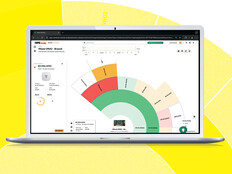The Importance of a Robust Network
“The patient just walked out of the hospital at 2:30 a.m.!”
I’ve heard that story — and many others like it — throughout my healthcare IT career. But such scenarios are becoming less common as available technology helps hospitals keep better track of not just people, but also equipment, medicine and every other detail of modern healthcare that you can imagine.
As a network architect, I don’t come up with all the patient- and clinician-facing technologies now transforming healthcare. Rather, it’s my job to help bring such technology and innovations to life through, say, patient check-in kiosks, mobile apps that help patients order food and arrange services, or devices for bedside charting and administering medication. Robust network architecture also propels the more advanced technology hospitals rely on today, including:
-
Radio frequency identification, which can be embedded in anything from wheelchairs to ID bracelets and allows hospitals to pinpoint the location of those items. RFID technology can help nurses find that patient who wanders off at 2:30 a.m., but it’s also used frequently in maternity wards to initiate a lockdown procedure whenever a newborn is taken anywhere it’s not supposed to be.
-
Analytics from a connected mobile experience, or CMX, represents a nascent technology now being deployed in healthcare settings to allow patients or caregivers to easily navigate the hospital through their smartphones. As futuristic as it may sound, hospitals that use CMX analytics can also push information or advertising directly to patients or hospital guests. A hospital’s Wi-Fi network might identify specific users as they walk toward a video display, for instance, and then launch customized content or push notifications to the users’ mobile devices.
Build a Better Highway
Hospitals looking to transform service delivery with the help of robust network architecture need bandwidth, which in turn requires the overall scale and customizable options of the network to be planned very carefully.
Do you know whether all of the applications and technology you’re considering require large throughput?
-
RFID requires processes that triangulate signals to locate objects. The greater the accuracy, the more robust the network. Are you looking to locate something on an entire floor, or within inches?
-
Big Data and analytics programs, including those deployed for cybersecurity, now generate and analyze millions of gigabytes of data to track and shut down threats to healthcare computer networks.
-
Activities as varied as bedside charting, digital signage, inventory tracking, digital radiology and streaming movies or other content all require major network support and bandwidth. An often used analogy is comparing a client’s network to lanes of a highway. The more cars on the highway, the wider the highway needs to become or you’ll end up in a traffic jam.
At CDW, my job is to determine how many lanes a hospital may need and just how those lanes will be used. We then build out our network purposefully, using all of the equipment and configurations our technology and operations require.
Ultimately, patients and employees never truly know what goes into the network that supports the technology they can’t live without. When a nurse receives a digital alert that a wayward patient has left his room, she’s not going to thank the IT department. But when patients and hospital staff experience the efficiency and accuracy such a well-planned network architecture makes possible, the result is improved care, better health outcomes and even greater patient satisfaction, and those are the main goals of any healthcare organization.
Discover how network technology can help your hospital achieve new goals by reading CDW’s recent white paper, “Healthcare Technology and the Patient Journey.”









